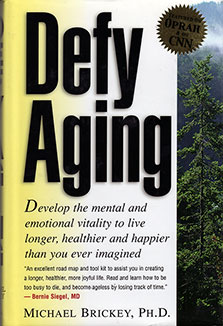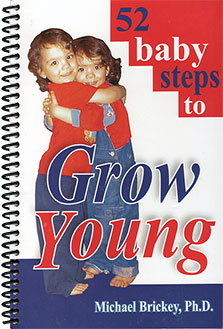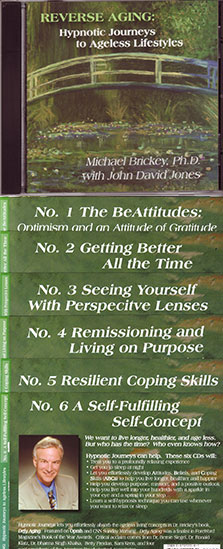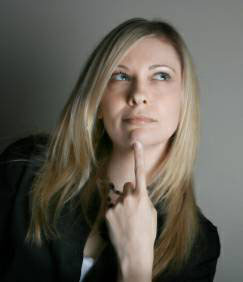Defy Aging Chapter 1 You Are Going to Live Longer—Will You Choose to Live Well?
You can’t help getting older but you don’t have to get old.
–George Burns
Why defy aging? Most people base their expectations about the future on the past. They look in the rear view mirror at how their parents are aging or aged and presume the same is in store for them. They hear phrases like “you’re not as young capable) as you used to be,” and are seduced into conventional expectations about aging. To paraphrase an advertising slogan, “Aging is not your father’s Oldsmobile.”
Huge paradigm shifts in how long and how healthy people can live create the opportunity to live a vital healthy life for 150 years. I would estimate that at least 50,000 Baby Boomers will do this—maybe more. But you can’t drive your parents ’Oldsmobile. You need a vision of healthy aging focused on what is possible rather than what has been. You need a continually renewing sense of purpose all your life. You need attitudes, beliefs and a lifestyle that foster health and longevity. And you need to defy conventional thinking about aging.
You have a choice—to just go along with conventional thinking, or to defy aging and live a long vital life. As Robert Frost [1] put it:
Two roads diverged in a yellow wood. . . .
I took the one less traveled by,
And that has made all the difference.
The longevity paradigm shift
The twentieth century brought rapid and profound paradigm shifts in our culture. The Wright brothers flew the first airplane in 1903. Today commercial airlines serve more than a billion passengers a year. Henry Ford began producing Model-T Fords in 1908. Today the U.S. alone has 130 million registered automobiles. In 1950 commercial television was just getting started. Today 98% of U.S. households have a color television. In 1950 there were only sixty computers in the world. These vacuum tube computers often filled a whole room. Now millions of hand-sized electronic personal organizers can process far more information and access the Internet without wires.
In the last century changes in longevity and health may not have been as obvious, but they are equally profound.From Christ’s birth to the year 1900 mankind gained an average of 3 days a year in longevity. Since 1900 we have gained an average of 110 days a year in life expectancy. [2]
In the U.S. life expectancy increased 62% in the last century. [3] At the turn of the millennium the U.S. had about 72,000 centenarians. The U.S. Census Bureau predicts we will have 170,000 centenarians in 2010 and 1,208,000 in 2050. [4] The number of centenarians will then explode when the huge Baby Boomer generation starts turning 100 around 2050. On the Today Show Willard Scott often calls centenarians to wish them a happy birthday. In the year 2000 if he spent eight hours a day, every day of the year, calling centenarians, he could spend a couple of minutes per call. In 2050, he would have less than nine seconds per call, seven days a week,365.25 days a year.
Chronic disability rates for citizens over 65 have been dropping 1-2% a year since the government started collecting statistics in 1982. [5] [6] [7] Many centenarians are physically healthy and mentally sharp. Researchers have been pleasantly surprised that an increasing number of centenarians are vital and healthy until the last year or two of their lives. [8]
Better educational, informational, and financial resources are making it easier to pursue and achieve excellent health and longevity. Sixty percent of current centenarians had less than an eighth grade education. Today, 80% of Americans over 25 are high school graduates and 33% are college graduates. Personal computers have put knowledge at our finger tips (and soon at our spoken command). Greater affluence allows greater access to resources.
Genetic engineering, destined to be the premier technology of the century, has increased the life spans of fruit flies by 30% and nematodes (worms) by 500%. Genetic engineers enabled mice to eat high fat diets and remain trim and healthy. Genetic engineers successfully inserted genes into humans to replace missing genes and to kill cancer cells. Medicine is using stem cells to grow blood, skin, and other human tissues, developing transplant organs from animals, and developing artificial organs. Scientists have immunized mice against Alzheimer’s disease and are beginning clinical trials with humans. There is a good chance scientific advances will not only cure diseases like Alzheimer’s, but also help us enhance our thinking skills and memories. Hormone therapies for men and women will soon help people look, feel, and function twenty years younger. Who would have believed that straight-laced former Senator Bob Dole would be promoting Viagra? Fifty isn’t what it used to be and neither is 100.
What current centenarians can tell us
A good start in our quest for longevity is to ask, What is unique about today’s centenarians? Besides apparently having “good genes,” they have only three things in common physically: 1) they are physically active people, 2) few smoke, and 3) they have maintained a fairly constant weight all of their lives. [9] The primary distinguishing factors for centenarians is between their ears. Mental traits that distinguish current centenarians are that they:
- are active mentally,
- are self-reliant and independent,
- are optimistic,
- have a good sense of humor,
- have good coping skills, and
- don’t hold on to losses or resentments.
These are pretty straightforward traits that you can choose to develop and hone.
Let me illustrate these traits by telling you a little about the Delany sisters—Sadie and Bessie.
Their father was a former slave. Sadie became a high school teacher and Bessie a dentist in Harlem. Neither married. Bessie was outspoken and Sadie was diplomatic. Both cared a great deal about doing the right thing and doing a good job. When they eventually retired, they were still active in their community and active with friends—though they refused to have a phone or television in their home. As centenarians, they did yoga exercises daily at home. A newspaper reporter interviewed them when Sadie was 102 and Bessie had her hundredth birthday. The reporter found they were such delightful, vital people that she helped them write a best-selling book, Having Our Say: The Delany Sisters’ First Hundred Years. Imagine writing your first book when you were a centenarian. Then came a Tony winning Broadway play based on the book and a second best-selling book. Bessie died at home in 1995 at 104. Sadie died at home in January 1999 at 109.
What it takes
What does it take to have a healthy, vital life for well over a hundred years? Current centenarians tend to be fairly ordinary people with an extraordinary psychological edge. Researchers estimate that 30% of longevity is due to heredity. [10] That percentage will decrease with the advent of genetic engineering. The 70+% is up to you. Science, medicine, and genetics only create the potential for longevity. Beliefs, attitudes, coping skills, and lifestyles are critical determinants for who will defy aging with long lives, good health, keen minds, and a passion for life.
There are many books on what pills to take, exercises to do, or diets to follow to be healthy and live long. Of the hundreds of published interviews with current centenarians, however, not one attributed his or her longevity to taking pills, eating blue-green algae, doing a particular exercise, or following a severe diet. As Dr. Dean Edell [11] has reported, newspapers, magazines and television’s insatiable appetite for new and alarming stories yields a profusion of contradictory advice and diet-of-the-month fads. If you are physically active, eat reasonably, and are not terribly overweight, mental factors are far more important to vital longevity than finding the perfect pill, diet, or workout. The biggest mental factors in longevity are a continually renewing sense of purpose, dealing with family members and friends dying, resilient coping skills, and dealing with massive change.
A vision of the future and an ageless society
In his “I have a dream” speech, Martin Luther King Jr. had a vision of racial equality and harmony. While there is still much to be done, much of his vision has been manifested. Let me share my vision of the future ageless society.
In this vision, the world has become an even more magnificent feast of information, activities, and ideas—a playground inviting us to gather some playmates and play. Americans have outgrown the youth cult culture and appreciate people of all ages. We have become an ageless society. [12] With hormone replacements, wrinkle removing, and other medical advances, it’s often hard to tell how old someone is anyway. There are centenarians who look, move, and think like 30-year-olds. After childhood age has become meaningless. People are valued for their qualities and contributions rather than their age or color. One hundred is as common as 65 was at the turn of the century. With so much change, people increasingly appreciate the continuity and perspective that experienced people offer. The Mentors for Families Foundation has facilitated many older people “adopting” children and families to be surrogate grandparents and mentors for struggling families.
Many people pursue serial careers and their cross-pollinating of ideas has become one of the most generative sources of innovation. The very fluid job market rewards workers according to their skills, talent, character, and services. Many people are self-employed. Most older Americans are financially comfortable enough that they feel they can afford to invest in health, fitness, relationships, helping others, and making a contribution. Centenarians are valued members of society who share their talents and wisdom in profit, nonprofit, and volunteer settings. With so much change people find comfort in leadership by experienced people just as millions were comforted by hearing the evening news by Walter Cronkite, news analysis by Daniel Shore, or leadership by President Reagan.
As the hippie movement in the 1960s and the environmental movement of the 1980s produced a shift in values and consciousness, the whole person movement of the 2010s shifted the focus from materialism to integration of mental, physical, and spiritual health. Brain wave biofeedback devices help people better identify and choose their emotional states and moods. Like dentist visits, most doctor visits are for checkups, monitoring, early detection, and prophylaxis. Telehealth monitoring helps with early identification of problems. Checkups are proactive consultations on how to be as fit and healthy as possible (as opposed to just checking for diseases). Anti-aging medicine is the most common medical specialty. Hearing and vision problems are readily treatable. Genetic engineering corrects a lot of health problems before they are manifested. Cancer, heart problems, and diabetes are as manageable or treatable as tuberculosis. Physicians and the public have a much better understanding of how the mind and body are one system.
In the 1990s more and more college students were over thirty. Now half of college students are over fifty. Learning technologies have made it easier to learn information and to understand complex relationships. Brain wave biofeedback devices help people access optimal learning states. The world’s best teachers use virtual reality demonstrations to aid learning. Computer chip implants help people supplement their brains with information and information processing skills. Campuses, neighborhoods, and organizations have more of a mix of ages than ever before. With most of the population over forty, television, radio, and the new forms of media are offering very diverse and more sophisticated programs at a wide variety of intellectual levels. Information and programs are available on demand 24 hours a day at home.
The plan for defying aging
Defy Aging begins with a self-test in Chapter 2 to see how well you are defying aging. Chapter 3 looks at the role of attitudes, beliefs, lifestyles, coping skills, and genetics in determining who will live long and healthy lives and who won’t. Chapter 4 looks at the connection between what we believe and think and our physical and mental health. It examines 36 beliefs that distinguish people who defy aging. If you want to adopt these beliefs, Chapter 5 gives you powerful strategies for changing beliefs and metaphors. Chapter 6 examines four attitudes that are key to healthy longevity—optimism, gratitude, dealing with it, and embracing lifelong learning and change. Exercises help you develop these attitudes. With people living longer and massive societal changes, you need to continually renew your sense of purpose. Chapter 7 presents a process for continually renewing your sense of purpose.
Living longer presents new challenges. Are you going to be married for 100 years? Chapter 8 examines how to make a marriage work for a century and how to be resilient if you choose a different path. Many men tell me that living longer isn’t really living if there is no sex. With aids like Viagra, men can have erections long past 100. Chapter 9 discusses men’s fears and women’s concerns about sex.
Another challenge is dealing with outliving friends and family. Some people are resilient at dealing with loss and some people never get over losses. Chapter 10 examines what makes for resilient, healthy grieving and includes exercises to help you develop these skills. Dealing with time and change is a lot easier with a carefully considered self-concept and an understanding of timelines. Chapter 11 examines these issues and provides helpful exercises.
Every month the media present a new “miracle” diet. Chapter 12 examines the nutritional tower of Babel and how to decide what you should eat and drink. Vitamins, minerals, and hormonal supplements can be very helpful. Chapter 13 helps separate supplement help from supplement hype.
Fitness does not need to be an ordeal. It does need to address all the key aspects of fitness and your weakest area of health. Chapter 14 considers how an intelligent approach to fitness now can keep you fit for well over a hundred years. A realistic longevity plan also needs to assess and minimize risks without taking the zest out of life. Chapter 15 considers risks and includes a risk assessment quiz. Another key ingredient to longevity is effectively managing finances. Chapter 16 advocates earning money well past “retirement age” and living below your means so you will have resources to take sabbaticals, change careers, or deal with adversities.
The last chapter examines the evidence from the biological sciences for 150 years of healthy living. Advances in medicine, genetic engineering, hormonal therapies, and medications are helping people look, feel, and function younger. These scientific advances are truly exciting.
Just reading Defy Aging will give you many new ideas and perspectives for how to live longer, healthier and happier than you ever imagined. The greatest benefit, however, comes from doing the program’s dozens of exercises and developing your comprehensive mission statement.
Why live so long?
Why live to 150? For me it’s like asking a mountain climber why she wants to climb mountains. It’s not just the challenge. And I don’t seek to be in the Guinness Book of World Records or Ripley’s Believe It Or Not as the oldest person. Living to 150 is uncharted territory and life is a work of art. I want to craft a life that is enjoyable and purposeful for 150 years. And I want to show you how you can too. There is another reason to defy aging and live a long vital life—the alterative. People who do not attend to the mental aspects of longevity have shorter lives, more health problems, more pain and more depression.
When you decide and believe that you will live to 150, it changes your perspective on life. Mid-life becomes 75 instead of 40. Hormone replacement, which is common for women and will soon be common for men, will delay the physical and emotional shifts and sexual decline that accompanies declining hormone levels. So you can postpone that mid-life crisis at 40 to 75. By then you should be mature enough to handle it with ease. Setbacks are easier to absorb as there is more time to succeed at other ventures. If you like, you will have the time to pursue several careers or interests.
The choice
Most people expect a car to last about eight years and then be ready for the junk yard. (That’s 80 years in people years.) Go to a car show, however, and you will see cars almost a hundred years old that look great and run well. Those cars will soon be centenarian cars. If we show the same attention and love for our bodies, minds and spirits as those car owners have done, we can be in as excellent condition as those classic cars.
Look around and it is obvious that many people choose overeating, not exercising, excessive television, or heart attack lifestyles. Only 40% of Americans even take vitamins on a regular basis. Many faces show the ravages of depression and stress. They might say, as Eubie Blake said on his 100th birthday, “If I had known I was going to live so long I would have taken better care of myself.” There is another choice—to defy aging.
Question:Who wants to live to be 150 anyway?
Answer: 149-year-olds.
Ten Warning Signs of Mental Longevity
- Refuses to hold onto resentments
- Refuses to conform to conventional thinking
- Refuses to engage in pessimistic thinking
- Refuses to brood over losses
- Insists on always learning and growing
- Insists on being physically active
- Insists on being self-reliant
- Frequently is totally absorbed in activities
- Places an inordinate emphasis on humor
- Doesn’t get drunk on New Year’s Eve
References
Frost, Robert. (1916). The road not taken. New York: Holt, Rinehart, & Winston, pp. 270-171. (This book includes his The Road Not Taken and other poems.)
Rowe, John W., & Kahn, Robert L. (1998). Successful aging. New York: Pantheon Books, pp. 182-183.
The world almanac and book of facts 1999. Life expectancy was 47.3 years in 1900 and 76.5 years in 1997 (the latest available data), p. 875.
U.S. Census Bureau. Current population reports: Population projections of the United States by age, sex, race, and Hispanic origin: 1993 to 2050. P25-1104.
Kolata, Gina. (1996, February 27). New era of robust elderly belies the fears of scientists, New York Times, v. 145, pp. A1, C3.
Angier, Natalie. (1995, June 11). If you’re really ancient, you may be better off, New York Times, Sec 4 Week in Review, p. 1.
Vita, Anthony. J., Terry, Richard B., Hubert, Helen B., & Fries, James. F. (1998). Aging, health risks and cumulative disability, New England Journal of Medicine, 338, 1035-1041.
Good health until the last few years is based on the New England Centenarian Study. See: Perls, Thomas T., & Silver, Margery H. (1999). Living to 100. New York: Basic Books. Also note the Kolata, Angier, and Vita, op. cit.
The mental and physical traits were the common denominators that stood out after reviewing hundreds of interviews with centenarians and books such as Centenarians: The Bonus Years, Living to 100, Centenarians: The New Generation, Centenarians: People over 100: A triumph of will and spirit: The Georgia centenarian study, Centenarians: The story of the 20th century by the Americans who lived it, and Jeanne Calment: From Van Gough’s time to ours: 122 extraordinary years. In the last few years there has been a mushrooming of autobiographies and collections of oral histories.
The original basis for the 30% figure was a Danish study (discussed in chapter 4) that compared the longevity of fraternal and identical twins. Subsequent research has generally supported this figure and most researchers use the 30% figure. Thomas T. Perls and Margery Silver in Living to 100 make an interesting case that centenarians may come from a different gene pool. More research is needed on their hypothesis.
Edell, Dean. (1999). Eat, drink and be merry. New York: HarperCollins.
I discovered the term and concept "ageless society" in Klatz, Ronald. (1999). Ten weeks to a younger you. Chicago: Sports Tech Labs, Inc.






